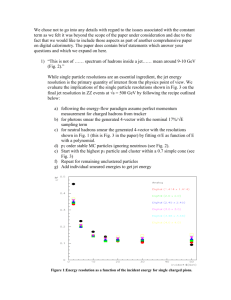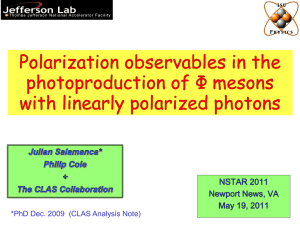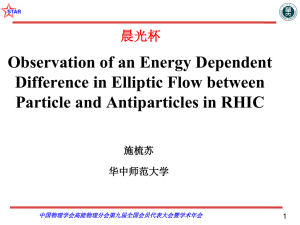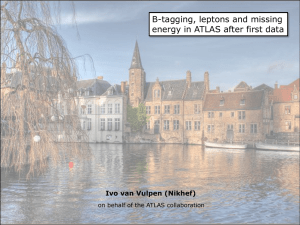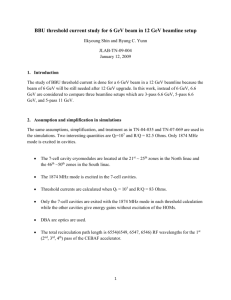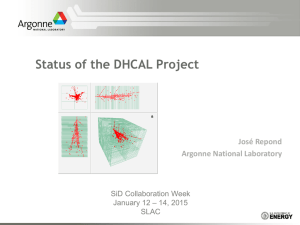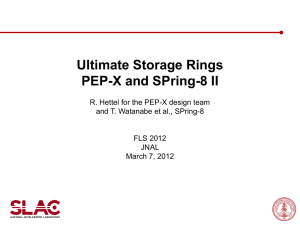extRemes Presentatio..
advertisement
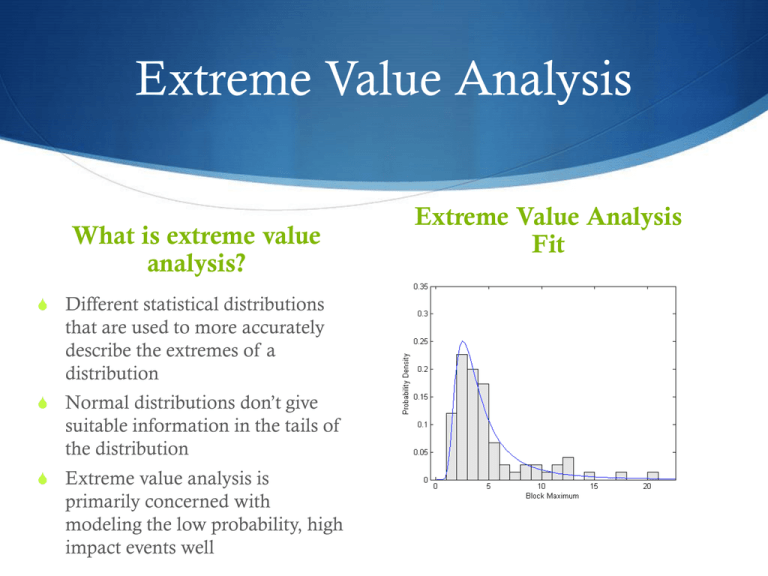
Extreme Value Analysis What is extreme value analysis? Different statistical distributions that are used to more accurately describe the extremes of a distribution Normal distributions don’t give suitable information in the tails of the distribution Extreme value analysis is primarily concerned with modeling the low probability, high impact events well Extreme Value Analysis Fit Extreme Value Analysis-Why is it Important to Model the Extremes Correctly? Imagine a shift in the mean, from A to B In the new scenario (B) most of the data is pretty similar to A However, in the extremes of the distribution we see changes > 200%! Extreme Value Analysis Changes in the mean, variance and/or both create the most significant changes in the extremes Risk communication is critical “Man can believe the impossible, but man can never believe the improbable” --Oscar Wilde (Intentions, 1891) Extreme Value Analysis - Uses Climatology Hurricanes, heat waves, floods Reinsurance Industry Assessing risk of extreme events Wall Street Market extremes and threshold exceedence potentials Hydrology Floods, dam design Water Demand! Two Approaches To EVA Block Maxima Points over Threshold location parameter µ scale parameter σ shape parameter k Used… …in instances where maximums are plentiful …when user would like to know the magnitude of an extreme event shape parameter k scale parameter σ threshold parameter θ Used… …in instances where data is limited …when user would like to know with what frequency extreme events will occur Case Study Introduction Water demand data from Aurora, CO Used for NOAA/AWWA study on the potential impacts of climate change on water demand Generalized Extreme Value Distribution: Block Maxima Approach ‘Block’ or Summer Seasonal Maxima in Aurora, CO Issues For water demand data ‘blocks’ could be annual or seasonal However, this leaves us with a very limited amount of data to fit the GEV with for Aurora This is not an appropriate method to use because of the limited data GEV: Block Maxima Approach Aurora, CO Seasonal Monthly Maximums Compromise Not a true maxima However, it allows GEV modeling on smaller data sets An acceptable approach for GEV modeling GPD: Points Over Threshold Approach Approach Daily Water Demand; Aurora, CO Choose some high threshold Fit the data above the threshold to a GPD to get intensity of exceedence Fit the same data to Point Process to get frequency of exceedence GPD: Points Over Threshold Approach Capacity of Points Over Threshold Process Uses more data than GEV Can answer questions like ‘what’s the probability of exceeding a certain threshold in a given time frame?’ or ‘How many exceedences do we anticipate?’ We can also see how return levels will change under given IPCC climate projections This will give an idea about the impact of climate on water demand Points Over Threshold Use The point process fit is a Poisson distribution that indicates whether or not an exceedence will occur at a given location The point process fit couples with the GPD fit will be used to model the data Non-Stationary EVA Benefits Allows flexible, varying models Improved forecasting capacity Trends in models apparent 0 1 x Potential covariates Precipitation Temperatures Spell statistics Population Economic forecasts etc 4e-04 Stationary GEV 2e-04 1e-04 0e+00 PDF 3e-04 Unconditional GEV 0 2000 4000 6000 Maximum Streamflow (cfs) 8000 4e-04 3e-04 2e-04 1e-04 0e+00 PDF 2e-04 1e-04 0e+00 PDF 3e-04 4e-04 Conditional GEV Shifts with Climate Covariates 0 0 20002000 40004000 60006000 Maximum Streamflow (cfs) (cfs) Maximum Streamflow 80008000 (Towler et al., 2010) 4e-04 4e-04 Conditional GEV Shifts with Climate Covariates 2e-04 2e-04 P[S>Q90Uncond] ?? 40% 1e-04 1e-04 10% 3% 0e+00 0e+00 PDF PDF 3e-04 3e-04 Q90 0 0 2000 2000 4000 4000 6000 6000 Maximum Streamflow Streamflow (cfs) (cfs) Maximum 8000 8000 (Towler et al., 2010) Non-Stationary Case We can allow the extreme value parameters to vary with respect to a variety of covariates Covariates will be the climate indicators we have been building (temp, precip, PDSI, spells, etc) Forecasting these covariates with IPCC climate models will give the best forecast of water demand Climate is non-stationary, water demand fluctuations with respect to climate will also not be stationary Generalized Parateo Distribution


